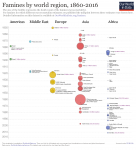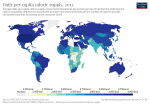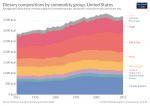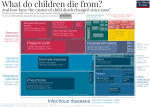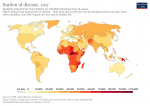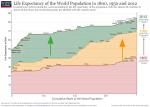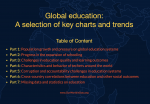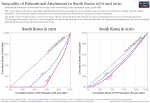Welcome to the Our World in Data Teaching Hub. Here you find information on how to use our work in teaching — and some materials we designed for teaching purposes.
If you have any questions or if you have suggestions to improve this page please write to us at info@ourworldindata.org or through our Feedback page.
Yes, you can use all our own work — charts, text, and data — for many teaching activities without any permission. This is because all our own work is licensed under a permissive ‘Creative Commons — by attribution’ license. You just need to credit Our World in Data and our underlying sources. That’s it.
This is different for material which is produced by others and which we only make available here. Charts and data that is produced by third parties remain subject to their original license terms.
We know from emails and surveys that many teachers and professors use our work. This includes teachers from primary schools, secondary schools, and higher education institutions across the world, including leading universities such as Oxford, Cambridge, MIT, Berkeley, Harvard, and Stanford. Our work is also featured in many textbooks and learning tools, such as the CORE project.
Educators use our work to teach courses in many fields, ranging from physics, medicine, psychology and biology, to sustainable development, environmental sciences, economics, politics and public policy.
Drawing on their experiences, here are some ways you can use our work in teaching for both yourself and for your students:
- You and your students can use our articles as background or assigned reading.
- You can add our charts to your presentation slides.
- You can download data for specific charts — or even complete datasets from our GitHub account — to conduct your own analyses and create your own charts.
- You can have your students explore data through our interactive charts.
- You can have your students practice data management, cleaning, and analysis with our datasets; large datasets that might be particularly suitable are our COVID, CO2, and energy datasets; they can also be accessed through our Pythonic API.
- You can point your students to our posts, entries and data to support them with their presentations and term papers.
- You can use our charts and data to write your own textbooks and teaching material.
If you already use our work to teach, we would love to hear from you.
You can fill out the teaching survey, write to us at info@ourworldindata.org or through our Feedback page. It would be great to know how our materials have been helpful, and what we can do to make it even more useful for you.
For selected topics we have created interactive teaching notes, presentation slides, and chart sets, which we designed specifically for students and teachers. You are welcome to use, edit and share these materials for free.
These materials were created a few years ago, so some slides and graphs do not reflect our most recent data and research. We are working on updating and expanding the materials. As the interactive charts have usually not changed substantially, you might still find them useful. That is why we list them here, so you can find the most recent data available.
Extreme Poverty
What your students will learn:
- What is extreme poverty?
- Why should we care about it?
- How should we tackle it?
Related content:
Hunger and Malnutrition
What your students will learn:
- What is the number of undernourished people in the world and how is this changing?
- What are the main causes and determinants of hunger and malnutrition?
- What does this all mean in terms of policy?
Related content:
Global Health
What your students will learn:
- How does the general health situation of people in poor countries compare to the health of people in rich countries?
- How are population health outcomes changing over time?
- How difficult is it to improve health outcomes in poor countries?
- What does this all mean in terms of policy?
Related content:
Population Growth
What your students will learn:
- How many people live around the world today?
- Will humanity keep growing indefinitely?
- How will population dynamics change in the next decades?
- What is the link between population growth and development?
- How does development lead to smaller families?
Related content:
Global Education
What your students will learn:
- What are the private and social returns to education?
- How has the quantity and quality of education changed over time?
- What are the main challenges going forward?
Related content:





